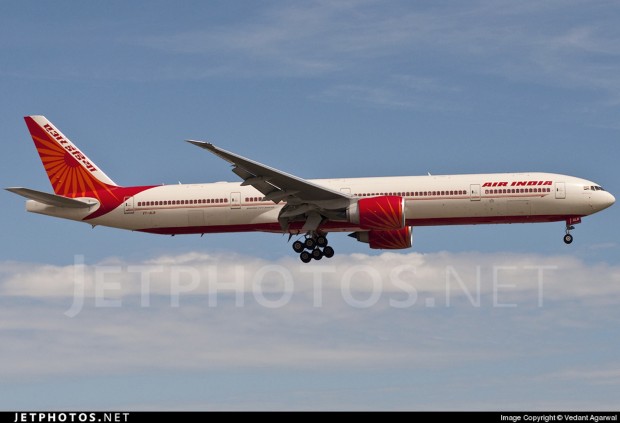
The Daily News & Analysis (DNA) newspaper must be complemented for its report on the bird-strike incident involving Air India Boeing 777-300ER VT-ALR Meghalaya as it performed flight AI144 from Newark to Mumbai on July 13, 2014. It is well written, considering its reader base is technically unaware of aviation intricacies.
Very special kudos to the flight crew of Niranjan Singh, Pankaj Wadhawan and Shilpika Das led by Captain Gautam Verma. As VT-ALR departed Newark, the left engine failed and caught fire.
Bangalore Aviation readers know all commercial aircraft can take-off with an engine failure. So what makes this incident so different? It is all to do with weight and some basic mathematics.
The 777-300ER is a 300+ seat aircraft meant for intercontinental travel and is powered by the GE90-115B, one of the largest engines in the commercial aviation world. Flight AI-144 had a planned distance exceeding 8,500 miles (13,600kms) i.e. a flight close to 14 hours in duration. This required the aircraft to be filled to the brim with fuel; as much as 1.8 lakh litres.

As the performance table of the 777-300ER shows, the maximum take-off weight (MTOW) under normal conditions is 318 tons, its maximum landing weight (MLW) is only 251 tons. The MLW is always lower than MTOW since the under-carriage has to cope with the impact and forces of a landing aircraft.
Capt. Verma and team had to contend with this excess weight while dealing with a failed engine which was burning. Due to the extremely destructive nature of fire and its propensity to rapidly spread, in the aviation world, fire means an immediate landing. However, when a flight fuelled to the point of being well over the maximum landing weight the normal protocol is to lighten the aircraft by dumping fuel.
This was the contradiction the pilots had to deal with. They could not dump fuel and risk igniting the fuel which would turn the plane in to a fireball. However, if they landed above the maximum landing weight, their under-carriage could collapse and turn the plane in to a fireball on the runway.
A heavy airplane requires a faster landing speed which in turn increases the stresses on the landing gear and main under-carriage, and also challenges the pilots to stop an extra-heavy plane on the same length runway.
Bowing to the danger of fire, the pilots risked landing back at Newark, while over-weight, and with one failed engine which skews the flight dynamics of the aircraft.
Capt. Verma and team in a masterful act of flying, landed the over-weight plane on one one engine. The high-speed over-weight landing blew out many tyres, but the flight was landed safely and 300+ passengers were safe.
Bangalore Aviation salutes Captains Gautam Verma, Niranjan Singh, Pankaj Wadhawan and Shilpika Das.
“Blue skies!!!!!” lady and gentlemen.
Share your thoughts via a comment.
 Bangalore Aviation News, Reviews, Analysis and opinions of Indian Aviation
Bangalore Aviation News, Reviews, Analysis and opinions of Indian Aviation
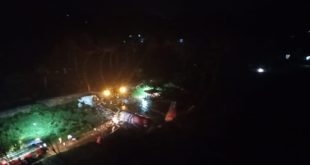
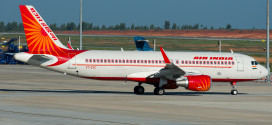
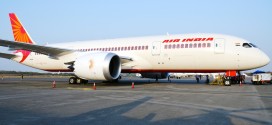
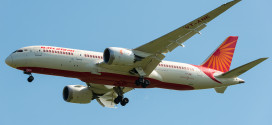
Was this an unique incident? Perhaps not, surely there must be other similar incidents as well. That said, keeping cool and be able to land with nothing more than busted tyres was naturally commendable.
Not too many incidents like this Armugam. Engine fire with an extra heavy aircraft well above MLW is not common at all.
Would JFK be a better option given its longer runway?
Yes, it would have been better, but I notice, pilots normally like to return to the origin airport. I am not sure if AI still operates to JFK or not. Winds could also play a role. No point of having a long runway if the winds are not favourable.
AI does operate to JFK, however landing at JFK would have meant throwing alot of other traffic out of gear. EWR is a lot less busy.
Also during departure the pilots would have briefed about returning back due any failure, and would already have the necessary instrument approach charts out. Diverting to JFK would have meant a a new approach briefing and more wasted time in fetching the paper charts for JFK.
JFK and EWR are very similar in the amount of traffic, JFK has only a very slight edge.
Very nice job by the pilots. On the other hand, it seems like VT-ALT came in handy (which was hit by truck and with this incident perhaps next B777 for cannibalization) to fetch an engine replacement for VT-ALR.
I was under the impression after Swissair 111 weight considerations are out of window in case of a fire. First land later think if airframe is usable. Is it possible crew contemplated US 1549 situation ie., loosing both engines if they hit a flock.
You are absolutely correct. SR111 declared PAN PAN PAN but crashed before it could land. Which is what I highlighted. In case of fire, put the plane down!!!